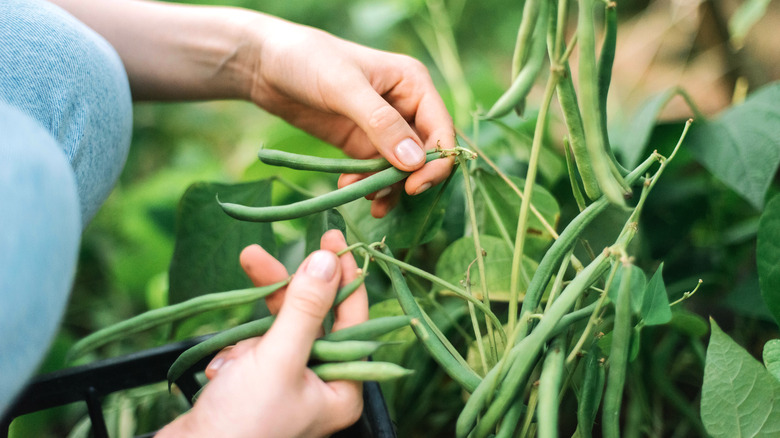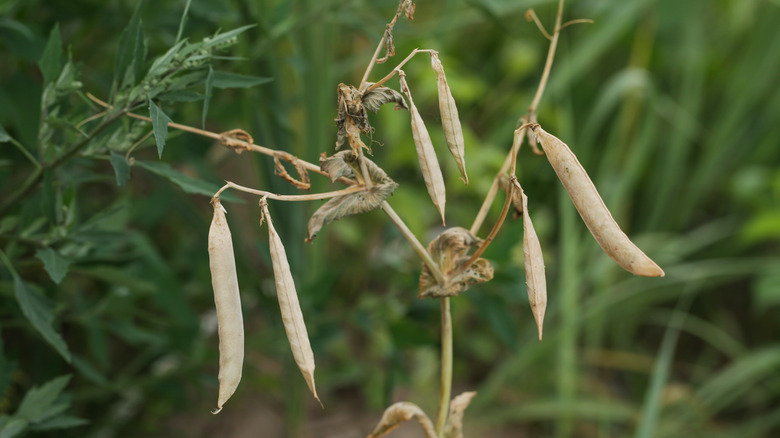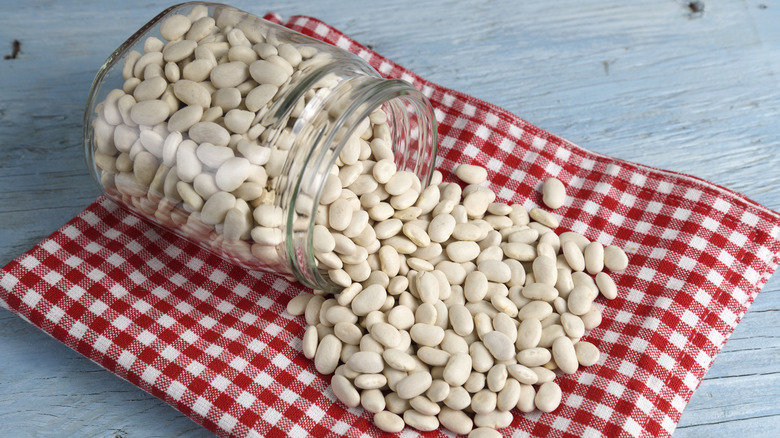Harvest And Save Green Bean Seeds To Plant For Next Year. Here's How
Is your edible garden home to green beans? Green beans (also known as "snap peas" and "string beans") come in bush and pole varieties, and aren't always green — they can be yellow and purple, too. Growing them at home is remarkably easy, and better yet, your harvest can be a gift that keeps on giving. Not only can you cook the beans at the end of the season, but you can also store some of the seeds and plant them again the next year. Repeat this process annually, and there may no longer be any need to buy new bean seeds from the store. Patience is the key to saving green bean seeds for planting next year. After that, you'll just need a clever way to store the seeds you collect.
Collecting green beans and hoping they'll dry afterward usually isn't effective, and you risk losing the harvest this way. Instead, you need to let nature do its work as the green beans dry on their vines and the pods lose their characteristic color, turning brown as they wither. Dryness continues to be an essential factor when you store the harvested seeds; if you ensure a sufficiently dry environment, your green bean seeds will remain usable for years after you've collected them. Below, we'll explain which plants to choose for seed collection, how to tell when the seeds are ready to be harvested, and the best practices for storing the seeds in different climate conditions.
How to harvest bean seeds for planting the following year
Green bean seeds are some of the easiest to save for planting, but you need to select the right plants for this purpose. Pick plants that are healthy, and if you're growing open-pollinated (OP) varieties, then those are the best bet for getting your seeds. Plants grown from OP seeds resemble their parent plants the most — a desirable quality if you want to replicate the year's harvest. OP plants are also highly adaptable to the environment, so they should thrive in your local growing conditions.
Once you've zeroed in on the plants, it's time to wait. While the growing season continues, care for the bean plants as you normally would, and resist the temptation to pick the pods while they're still green. While they're perfect for eating at this point, the immature seeds inside the pods are too moist, and this moisture will cause them to rot if you try preserving them. To prevent this, wait for the pods and the seeds in them to dry out. As the growing season winds down, the pods will lose their green color and become a shade of brown. At this point, if you flick the pods, you should hear the seeds rattling inside. This is your cue to harvest the pods. If your region has high relative humidity that prevents the pods from drying fully on the vine, cut the entire plant and hang it upside down to dry.
How to preserve bean seeds
Store the pods you've taken off the plants in a paper bag. As more pods become dry and you harvest them, keep adding them to the paper bag for storage. If you remove pods that still feel heavy and unwithered, you can dry them further by placing them on landscaping fabric.
Once all the pods are gone, begin the shelling process. The procedure is simple — all you need to do is break the dry pods open and take the seeds out. Any seeds that appear disfigured, or seeds that have germinated in the garden inside their pods, should go right into the compost pile — don't waste your time trying to preserve them. The chaff from which you've taken the seeds can join the deformed seeds and make an addition to your compost pile.
Your next job is to store the harvested bean seeds. The key here is to keep them away from moisture. Sealable, airtight containers are ideal. They will keep the seeds viable for as long as four years after collection as long as you place the containers in a cool, dark spot. If the relative humidity in your location is generally low, you can also store the seeds in an old paper envelope in a place that's not exposed to light or excessive warmth. If you live in a warmer region and heat is an issue, keep the container in the fridge until it's time to plant the green beans.


